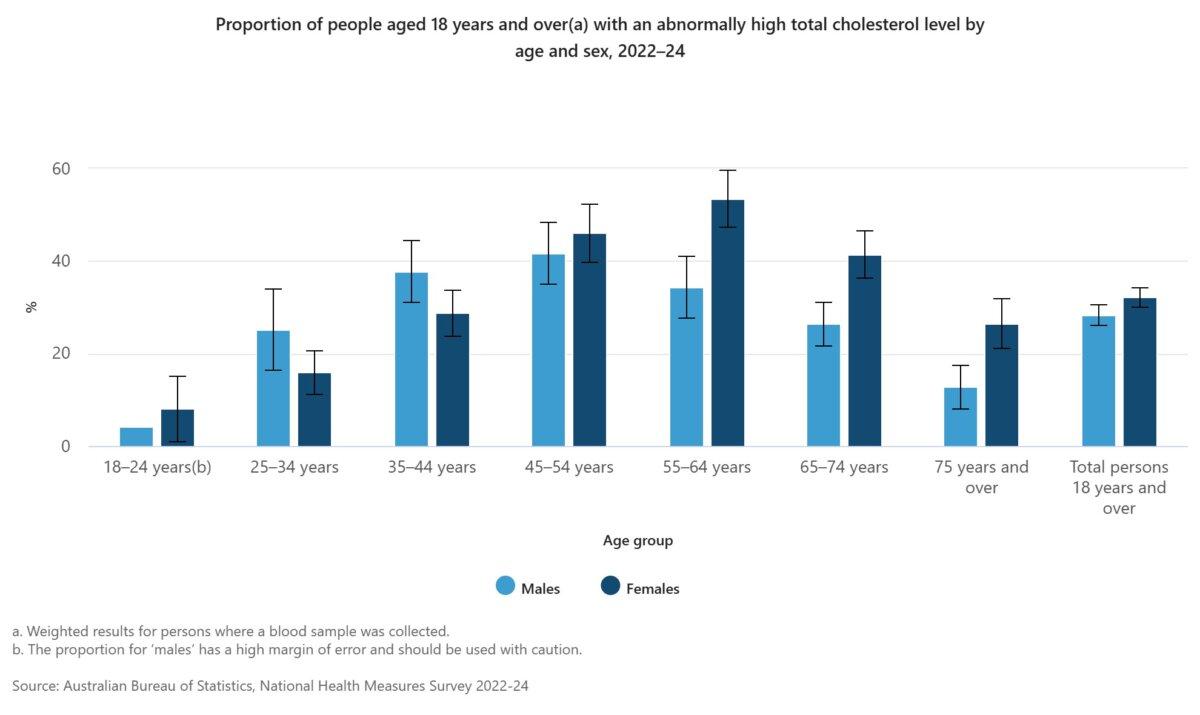Diabetes is affecting more people than it was 10 years ago, but cholesterol levels are falling. On the other hand, many Australians do not get enough vitamin D.
Good news, bad news, and surprising news from the National Health Measures Survey 2022-24, released today: The number of Australians with high cholesterol has declined, but the number of people suffering from diabetes is rising sharply. Many of the inhabitants of the world’s sunny continent do not get enough vitamin D.
The proportion of people with high cholesterol remains nearly one-third (30.2%) of adults, down from 33.2% in 2011/12.
32.1% of women are more likely to suffer this than men, at 28.2%.
High cholesterol, particularly elevated LDL (“bad cholesterol”) levels contribute to arterial plaque accumulation, increasing the risk of heart attacks and stroke. It can also contribute to other cardiovascular problems and even affect other organs.
Coronary heart disease is the major underlying cause of death in Australian men, the second most common in women, while cerebrovascular disease (stroke) is the fifth most common in men and third in women.

But diabetes numbers are heading in the opposite direction.
One in 15 (6.6%) suffers from the disease, up from one in 20 (5.1%) a decade ago. Another 2.7% are classified as having a higher risk of developing diabetes.
According to James Mowl, director of Health Statistics at the Australian Bureau of Statistics, “Men are more likely to suffer from diabetes than women. And adults living in the most disadvantaged areas are more likely to suffer from diabetes than disadvantaged areas.”
Elderly people may also be higher than younger people.
Additionally, the proportion of adults with indicators of chronic kidney disease has risen from 10.8% to 14.2% a decade ago.
The study also revealed that one in five Australian adults (20.6%) have vitamin D deficiency. This is more likely to occur in winter than in summer (since solar exposure is one of the ways to take vitamins).

“The results show that 26.1% of Australian adults had a lack of vitamin D in winter compared to 15.5% in summer,” Mowles said.
“We know that vitamin D is essential for the body to effectively absorb calcium. This is important for bone health and muscle function. Severe vitamin D deficiency can lead to brittle and fragile bones.”
However, the percentage of people who are in short supply has decreased over the past decade, down from 23.8% in 2011/12.



